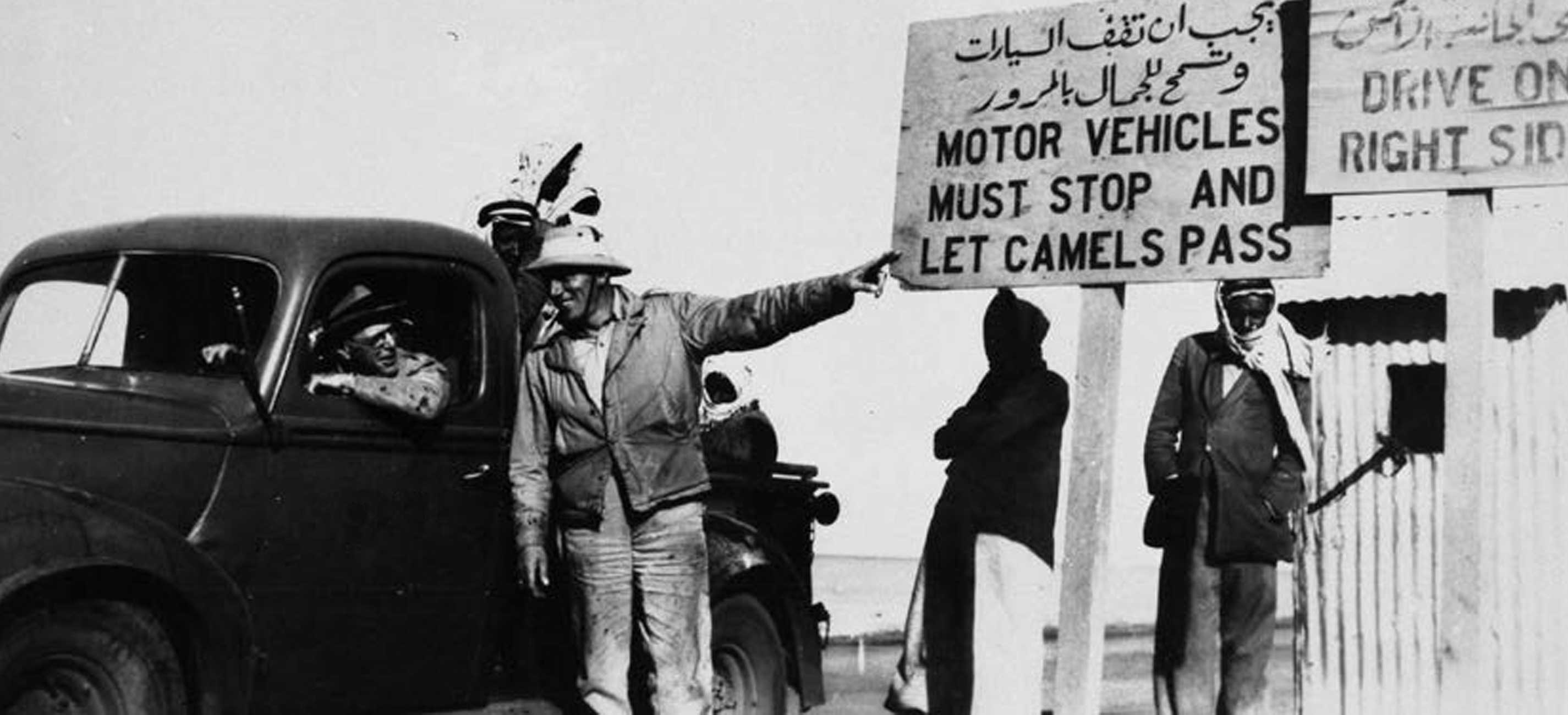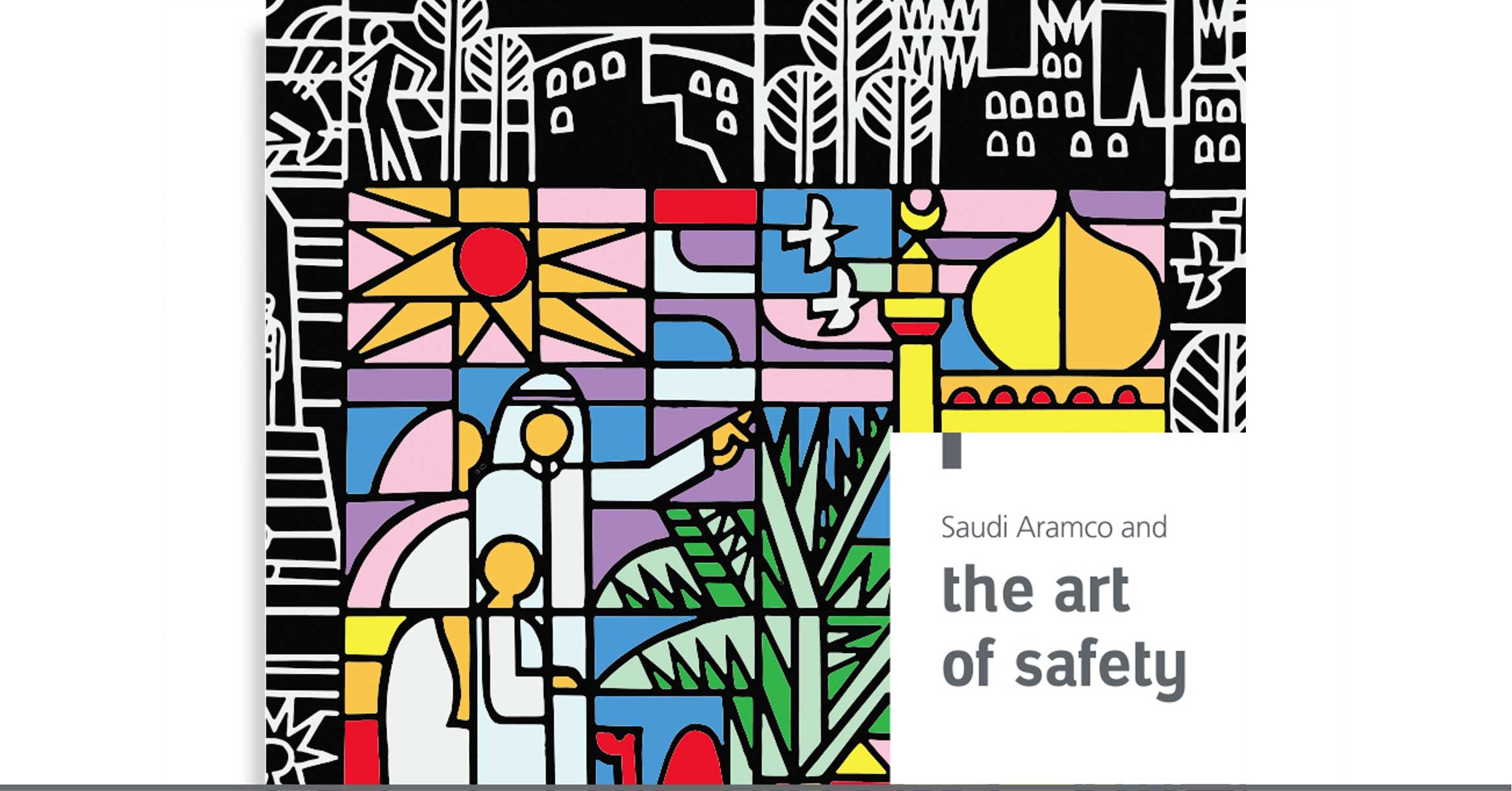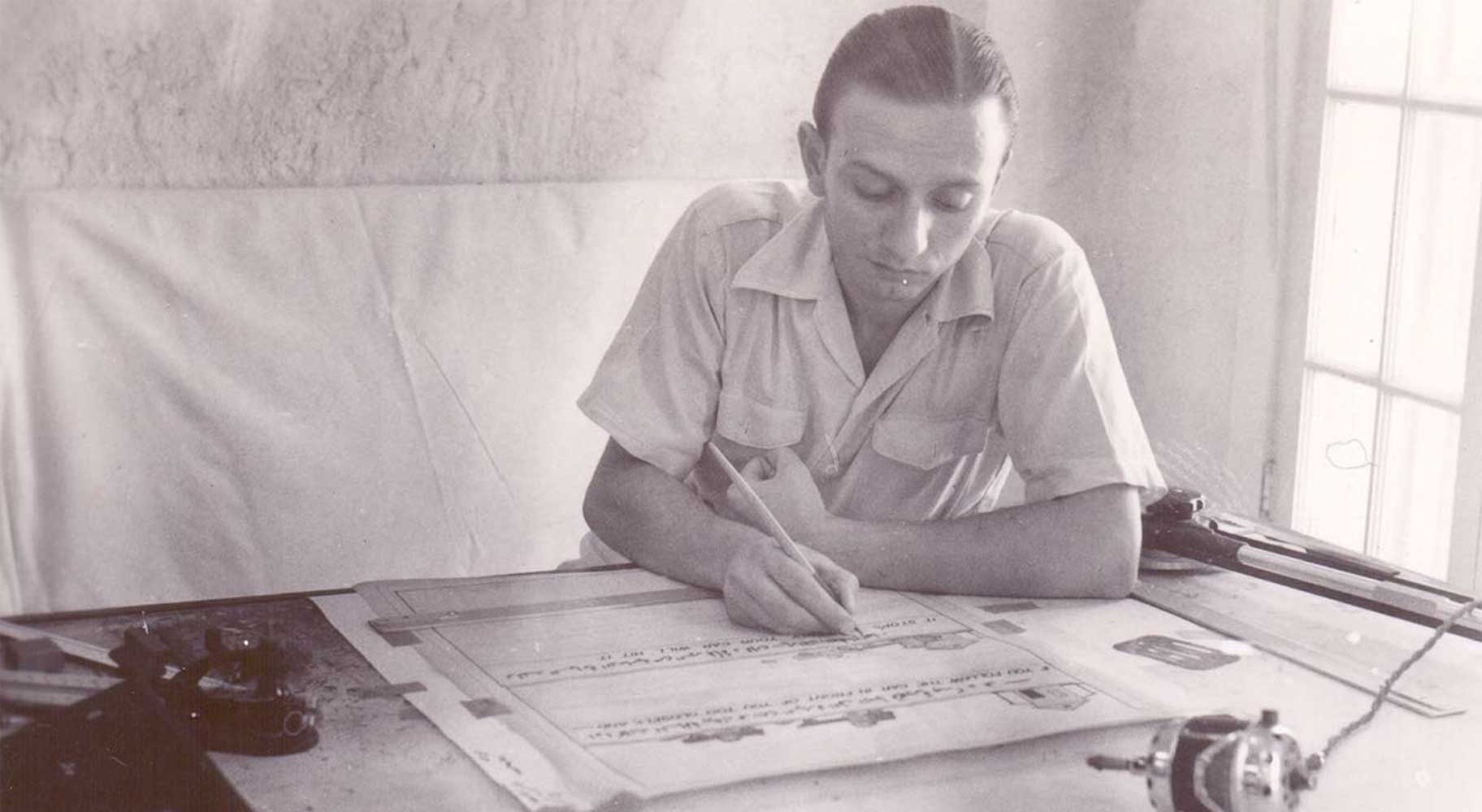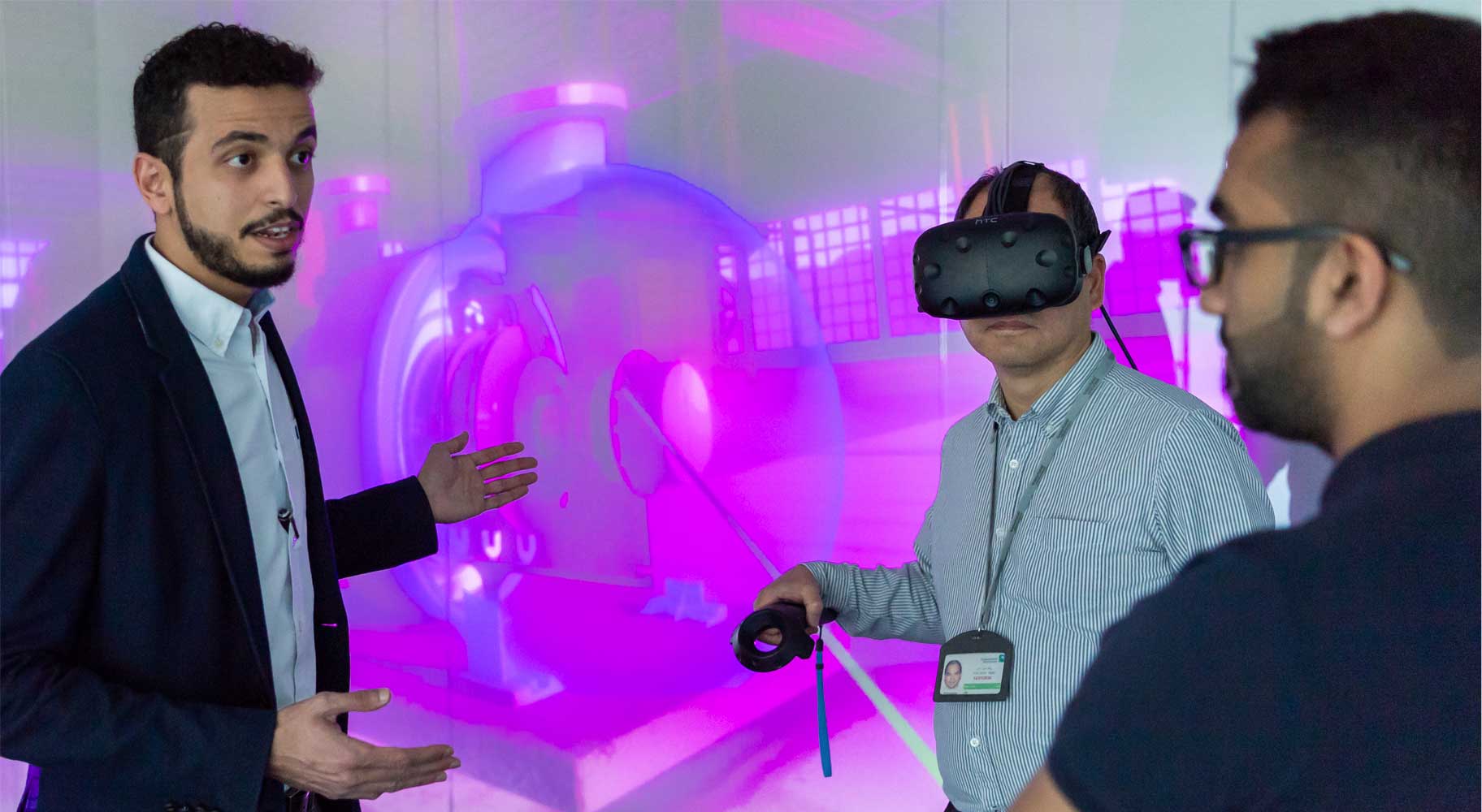Building a culture of safety
Safety has been built into Aramco’s operations right from the start, and communicated in a range of innovative and creative ways.

- Aramco has been a safety pioneer in the oil and gas industry since the company’s inception, more than 80 years ago
- Aramco developed a strategy to embed safety as part of its culture and found innovative ways to communicate this since the 1940s
- Applications and technological solutions — from drones to wearables — are providing a new boost in the drive for safety
The energy industry was built by bold adventurers. The entrepreneurs, geologists and field explorers who discovered and produced the fuels that underpin the global economy were experts in evaluating and mitigating risk in the toughest locations on both land and sea.
Transforming hydrocarbons into fuel, feedstock and advanced materials involves processing of volatile substances and is a task that requires people to come together in a complex, collective endeavor.
Our activities are underpinned by a safety-first mindset that is embedded into the Company’s business strategies, processes and performance measures. Safety is one of Aramco’s five corporate values — alongside excellence, integrity, citizenship, and accountability.

Communicating a safety culture
It was important to create a positive safety culture right from the start, and to this end, communication was key. The first safety engineer, Andy Anderson, joined the Company in 1940. He had a reputation for using innovative techniques to promote safety, including filmmaking.
Four years later, Charles Homewood, a radio operator from the early exploration days turned electrical engineer, became the chief safety engineer. Over the span of three decades, he pioneered new ways of communicating safety. He promoted the use of posters, art, and graphic imagery, as chronicled in the Aramco publication The Art of Safety.

Cover of Saudi Aramco and the art of safety, 2021
Initially, designing safety communications was down to the engineers in Dhahran. They produced a series of stickman images demonstrating safe behaviors — from holding a heavy box correctly to checking electrical cables. Over time, these efforts gave way to more elaborate artwork as professional artists took over.

An engineering at a drawing board illustrates a poster
The Company also sought to get workers involved with a competition back in 1948 to design a safety poster being an early example of a crowd-sourcing, participatory approach. By opening up the development of safety communications among employees, these tactics helped embed safety as a way of thinking.
Tracking safety progress
Aramco has carefully collated, analyzed and published safety statistics since the 1950s, initially in its Accident and Fire Prevention Report, before shifting to an annual Loss Control Report format in 1978. Since then, the lost time injury rate (incidents that result in a worker not being able to return to work), a key measure of safety performance, has declined from 1.43 injuries per 1,000 workers in the 1950s to 0.011 in 2020.
Other safety statistics recorded by the company include motor vehicle accidents, off-job injuries, and fires.
Tracking safety statistics is not simply to report improvements — but also to ensure preventative measures are taken for the future. With this in mind, Aramco introduced its Lifesaving Rules derived from decades of data. These rules, which cover the eight most hazardous activities at the Company, are communicated in six languages — including Mandarin — to ensure that they are widely promoted and easily understood.
Making workplaces safer today
Safety measures continue to evolve, as does the participatory approach that keeps employees engaged. In the 1940s, the Company introduced its Stop Work Authority that empowers any worker to halt an operation if they are concerned that it is unsafe.
Launched in 2018, the Company’s SafeLife app allows workers to log safety concerns and, if necessary, escalate any urgent issues. Another app is under development that will track employee journeys and alerts emergency personnel if a traveler becomes lost or stranded in tough terrain.

Using technology for a safer future
Digital technology is also making new safety behaviors possible. Aramco uses augmented and virtual reality to bring safety training to life.
Unmanned Aerial Vehicles (UAV) are being used to inspect high-rise equipment such as flare tips. These UAVs enable inspectors to survey these locations without endangering lives. It has also been used for search and rescue operations in Safaniyah. Digital helmets are empowering field technicians, while real-time digital data processing enables us to flag potential workplace hazards immediately.
In 2020, Aramco achieved its lowest-ever total case rate, while also recording its lowest rates in a decade for lost time injury and motor vehicle accidents . These figures suggest that adopting Fourth Industrial Revolution technologies is already improving safety performance, while also providing a useful prompt for people to think about safety afresh.

Aramco uses virtual reality for safety training
Building a safety culture in all realms of life
A testament to the decades of embedding safety into the corporate culture are the images and illustrations that remain from that time. Eight decades of images, collected in The Art of Safety book, reveal the unflagging efforts of Aramco’s safety experts to encourage a safety mindset – extending into off-job and recreational safety, among employees and their families, too.
Six posters that depict how safety has evolved at Aramco
Related Articles
The material in this article is intended to be for general informational purposes only, and readers should not place undue reliance on the statements or opinions therein. Any information provided speaks only as of the date this content was published and Saudi Aramco undertakes no obligation to correct, update, or revise any statements or opinions made in or implied by this article.









